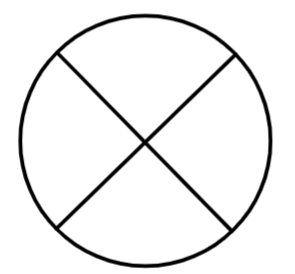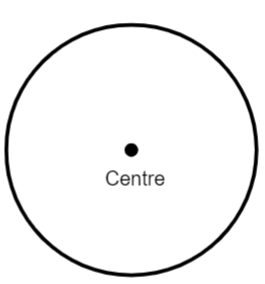
Say true or false: (a) Two diameters of a circle will necessarily intersect (b) The Centre of a circle is always in its interior.
Answer
500.4k+ views
Hint: Here in the given question we have to say whether the given statement is true or false. As we read the statement we get to know that they are asked based on the circle properties. Thus to solve this question we need to know about the basic properties of a circle that is about Centre diameter, radius, circumference.
Complete answer: (a) we know that every circle has some radius and the radius is defined as a line segment joining the Centre of a circle to its circumference. Diameter is twice the radius of the circle and this is the longest line segment formed in a circle which must and should pass through the Centre. In a given circle we can draw more than one diameter all these line segments will pass through the Centre and thus Centre becomes the intersection point

Thus, this leads us to the conclusion that two diameters should necessarily intersect in a given circle.
Therefore, statement (a) is true
(b) To answer this question we should know about the Centre of a circle. Centre is a very important part of a circle, without Centre and radius the circle cannot exist. We know that circle is formed at equidistant radius from the Centre, this will let us know that Centre is lying inside the circle

Thus, the given statement (b) is true.
Note:
A circle is a 2 dimensional figure which can be drawn in a plane sheet, unlike other 2 dimensional plane figures circle does not have any corners or edges. To find the area of the given circle we use the formula A = \[\pi {r^2}\] and to find the circumference or perimeter of the circle we can use C = \[2\pi r\], where r is the radius of a circle.
Complete answer: (a) we know that every circle has some radius and the radius is defined as a line segment joining the Centre of a circle to its circumference. Diameter is twice the radius of the circle and this is the longest line segment formed in a circle which must and should pass through the Centre. In a given circle we can draw more than one diameter all these line segments will pass through the Centre and thus Centre becomes the intersection point

Thus, this leads us to the conclusion that two diameters should necessarily intersect in a given circle.
Therefore, statement (a) is true
(b) To answer this question we should know about the Centre of a circle. Centre is a very important part of a circle, without Centre and radius the circle cannot exist. We know that circle is formed at equidistant radius from the Centre, this will let us know that Centre is lying inside the circle

Thus, the given statement (b) is true.
Note:
A circle is a 2 dimensional figure which can be drawn in a plane sheet, unlike other 2 dimensional plane figures circle does not have any corners or edges. To find the area of the given circle we use the formula A = \[\pi {r^2}\] and to find the circumference or perimeter of the circle we can use C = \[2\pi r\], where r is the radius of a circle.
Recently Updated Pages
Master Class 10 General Knowledge: Engaging Questions & Answers for Success

Master Class 10 Science: Engaging Questions & Answers for Success

Master Class 10 Social Science: Engaging Questions & Answers for Success

Master Class 10 Maths: Engaging Questions & Answers for Success

Master Class 10 English: Engaging Questions & Answers for Success

Master Class 10 Computer Science: Engaging Questions & Answers for Success

Trending doubts
The shortest day of the year in India

10 examples of evaporation in daily life with explanations

A Gulab jamun contains sugar syrup up to about 30 of class 10 maths CBSE

What is UltraEdge (Snickometer) used for in cricket?

On the outline map of India mark the following appropriately class 10 social science. CBSE

Why does India have a monsoon type of climate class 10 social science CBSE




